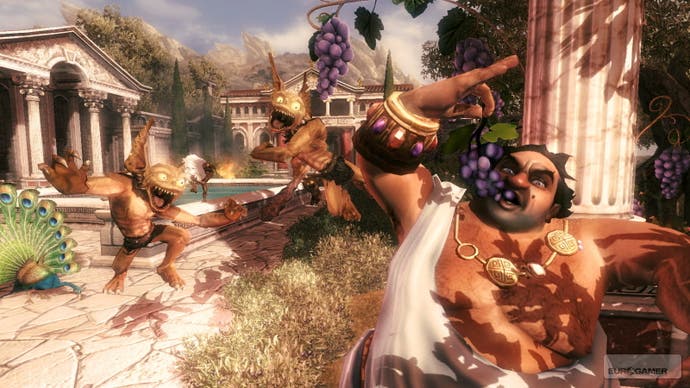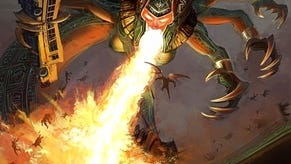Overlord II
In conversation with Triumph's creative director, Lennart Sas.
There are loads of ideas stuffed into Overlord II - often we had to watch out not to add too much. Just a few of the new gameplay highlights include the minions' ability to control war machines, such as catapults and ships, where the minions operate the oars and act as galley slaves. Enemies have become smarter too and some enemy types operate in formations lead by centurions, creating more challenging and epic battles.
The Netherworld is the home hub for the player and replaces the Dark Tower from the original Overlord. The player's dark domain is now much more alive with minion culture and can be extended to become a massive powerbase for the Overlord. The Overlord is able to possess minions to go on infiltration missions and the minions have learnt the art of disguise and can dress up as enemies to sneak past guards. All of this results in a much more rich and epic world-conquering experience.
When designing Overlord II, it was important for us that we expanded what the minions can do. Overlord is all about the minions. Rather than adding more base minion types (which would make controls more difficult and blur the lines between the minions), the four races are now stronger, more destructive and funnier then before. All the minions have had their abilities adapted to new challenges the game brings. Minions are now able to do things such as riding mounts, which in turn all have unique abilities. Wolves can jump, spiders can walk vertical walls.
Minions work together and can operate massive war machines under the Overlord's command. It's great to go catapult-bowling and score a full strike against an enemy formation that is marching. The new abilities also ramp up the humour. For instance, the disguise ability introduces a new tactical element, but also adds humour - it's just wonderfully comical to see minions dressing up in armour that doesn't really suit or fit them and generally arse about amongst the Empire legionaries. However, they will be able to fool enemies and act a little stealthier than the not-so-subtle amassed hordes of malevolent minions can normally be, so it opens up new routes and puzzles.

The new features are not opened to the player all at once, while they all do fit within the core controls scheme. Spreading the new features across the levels means that the player is confronted with new cool stuff to do across the game.
Yep, in Overlord II the player's character is the son of the original protagonist. Here's a bit of history. At the end of Overlord: Raising Hell, our dark protagonist was trapped in the Abyss by his treacherous Jester. In the vacuum left by his absence, the peasants of the world formed a new Glorious Empire heralding an age of logic, science and reason and other boring and sensible things. As it spread across the world the Empire started destroying anything to do with magic including the remnants of the Overlord's realm.
In Overlord II, we first meet the heir to the Dark Throne as a misunderstood and hard to manage ADHD kid - the son of the original Overlord and his mistress, another reveal from the end of Raising Hell. He is soon contacted by the last surviving member of his father's minions. From the hidden Minions Burrows in the Netherworld, the new Overlord emerges to harness the dark powers of magic in order to fight the most despicable Empire and fulfil his dark destiny.
The Netherworld is the hub of the player's dark domain, replacing the now-destroyed Dark Tower from Overlord I. From the Netherworld, you will literally undermine the world above. The Netherworld's features include a minion graveyard, where later in the game the player can resurrect his favourite minions, who are now named and have a title assigned according to their accomplishments.


